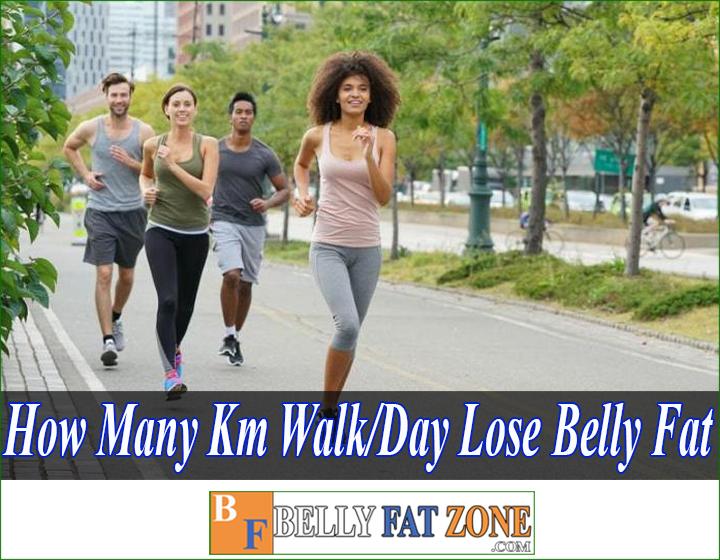How to improve your running posture helps you train more efficiently in less time with better results.
And especially when you run with the right posture, you will avoid the injuries that people often experience.
Running is a great way to improve heart health, burn calories and boost your mood, among many other benefits.
Before you start any new exercise routine, check with your doctor. Running is a high-impact physical activity that can put extra strain on your body.

Ensure your joints and body can handle the effects, especially if you've been sedentary or have other health problems. Factors that can increase your risk of running injury include:
- Running too much for your current fitness level can strain muscles, tendons, and ligaments. Leg pain syndrome is a common injury among runners.
- Technical incorrect. Incorrect running patterns can increase the risk of injury. For example, running with flat legs pulled can cause muscle tears.
- Wearing inadequate shoes: Inappropriate running shoes can increase the risk of various types of bulging, bruising, leg pain, etc.
- Hard track surfaces: The effects of running on hard surfaces can cause injuries, including leg pain and fractures from excessive muscle tension.
- Other environmental factors: These factors can include smooth and unstable surfaces, polluted air, environmental obstacles such as low branches or sunburn.
To help you limit possible running injuries, the detailed information below will guide you through proper running techniques to help you reduce your injury as much as possible. Now BellyFatZone invites you to refer to this article together!
I. How to run properly
Following these tips will help you understand and learn how to run tirelessly.
Warm-up the body
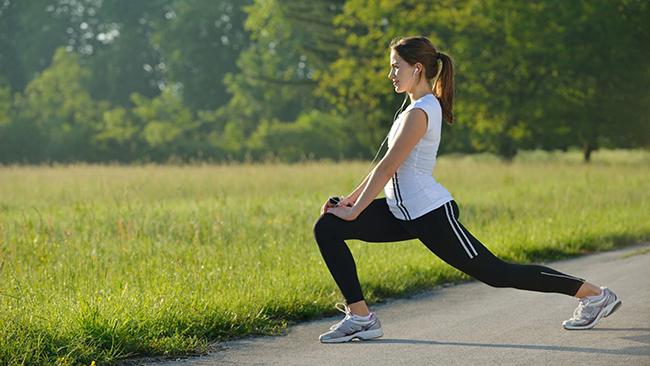
Before you start running, you need to warm up your muscles first. Do some stretching, and then start walking for 5 minutes to get your muscles and joints ready for the quick acceleration of your steps.
Never start running right away; otherwise, you will feel pain all over your body.
Don't look to the ground.
Your eyes should look straight ahead and focus on the ground about 3m – 6m away from you. You also shouldn't just look down at your feet without noticing your surroundings.
This proper running technique will help you see clearly what is happening in front of you to avoid falling. Looking directly at you will avoid vehicles, pedestrians, trees, electric poles, obstacles …
Read more: Common Running Mistakes And How To Avoid Them.
Relax your shoulders for proper running
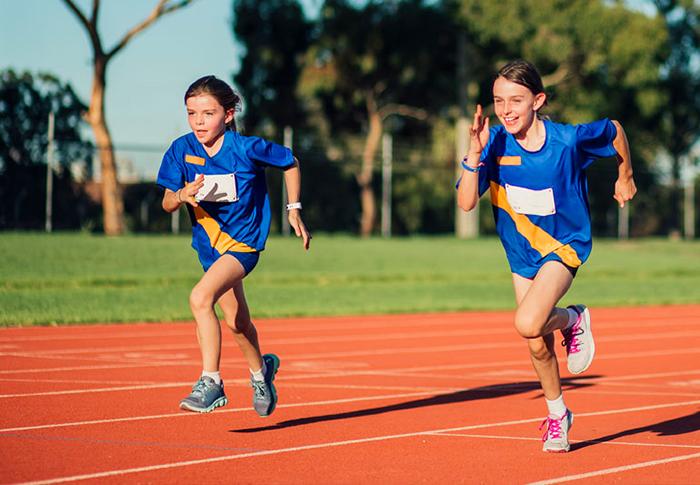
Your shoulders should always be held in the most comfortable position possible, or your upper body is slightly forward.
If you hunch your shoulders and back forward too much, hunchback will cause your chest to tighten, making it hard to breathe. It will be a lot easier to breathe if your shoulders are relaxed.
During your run, you also need to check if your shoulder is too stressful due to your shoulders' heavy lifting. If so, you should tighten your shoulder blades to bring your arms back comfortably and lower your shoulders.
Breathe rhythmically
One of the most effective ways to run is to breathe rhythmically by inhaling, running for two steps, and exhaling.
Also, learn to breathe deeply. This will allow better air to circulate through your body and eventually make you feel less tired, which will also help motivate you.
You can breathe through your nose or through your mouth, which doesn't affect how your body works.
Swing your hands
With the right running technique, your arms will move with your every step and whether you run fast or slow also depends on the speed of this hand strike.
However, you should move your arm from the shoulder joint, not the elbow. You should keep your hands running across your hips during each run.
You should move your hands at waist level if you want to run properly, at a distance where your hands will slide slightly over your hips when moving. Your arms should also be bent at a 90-degree angle.
Some joggers have a habit of keeping their hands as high as their chest, most commonly when they've started to feel tired. This habit can make tired us even more tired.
You may even feel shoulder and neck tension with a lot of discomforts.
Read more: What Is The Triathlon Gear List For Beginners?
Keep your knees at the right height.
It would help if you move your knees forward rather than raise them. This is a common mistake for a beginner to run; they often lift their knees higher than normal – The more you lift yourself off the ground, the more shock you will hit the ground and the faster your legs will tire.
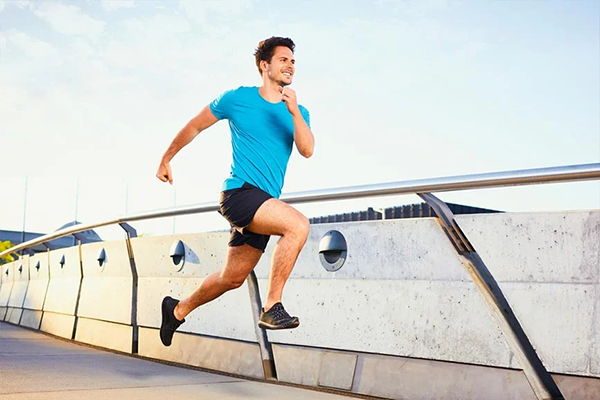
One right way to keep in mind is that your knees should not exceed your toes.
To save energy, adjust your body's speed so that you step gently and do not have to exert much effort when lowering your legs. Focus on stride instead of trying to lift your legs. Running properly will help you run longer, run longer, and get the benefits of running.
Some experts think that the effective way to run is when your feet contact the ground for 90 beats per minute. If you are running at a slower beat, shorten your stride.
Read more: How To Lose Belly Fat By Running?
Keep your hip joints steady and forward.
Hips are considered your focal position, and they are the places most susceptible to your running posture. Your hip joint should therefore be stable, balanced, and forward.
Ground properly
Another note in the proper running guide is that you need to land with the foot's middle (like in the picture). Most Runner chooses midfoot because it is the safest for the feet when running, saves energy, and avoids foot fatigue.
Try to touch the ground with the soles of your feet, then roll in front of your toes to spread the force evenly.
Stretch after running
After your run, you should start walking to get your breathing and beats back to normal. Then start stretching because, during running, your muscles tend to stiffen. To prevent such a situation and to prevent your muscles from being mishit, stretching is essential.
Persistence
For starters, running can seem daunting and persistent. Always start with an easy level and then gradually increase your distance day by day, but if you start to feel pain, take a day or two rest to restore your body.
If you follow the running guidelines mentioned above and combine running with a more balanced diet, your body will gradually get stronger, firmer, and love the sport more.
Running tips for beginners

Choose the right running shoes: choosing the right shoes will provide you with running comfort and assist with pain relief.
The best shoes for you are not the only ones that offer these features; they also have to match your foot's shape and the terrain you're running.
If you are running on asphalt, you will need lightweight and flexible shoes; If you are running on the trail, you should choose some shoes that provide stability and comfort. Always consult an expert to make the best option for yourself.
Running on a treadmill: Are you the one who feels time-pressured and doesn't see fit to go out running?
If so, a treadmill in your home or office is the best option. Except for not getting some fresh air, running on a treadmill will still yield the same results as if you were running outdoors.
Read more: How To Train For An Ultramarathon?
II. Running techniques
Guide running posture properly.
You may think that running involves your lower body the most, but the truth is that to get the right technique, you need to adjust and use your entire body from head to toe.
- Your head should be facing forward, not chin up or down. Your eyes should also focus on maintaining proper posture while keeping your neck aligned with your spine as you run.
- Your shoulders should move independently of your upper body and lie facing each other. When you step your right foot forward, your left shoulder should also be facing forward, and vice versa. This helps reduce muscle tension in the shoulder and consumes less energy. Shake your hands, shrug, and focus on relaxing at the same time, especially when you're tired.
- The way you move your arms can help you move faster or slow you down. Your hand should be at a 90-degree angle. Your palms or fists move from under your chin to your hips. That will help you push your body forward. Keep your elbows close to the sides of your torso.
- In most forms of exercise, the upper body, including the back, is the focal point. So this is the area you need to pay attention to jog properly. The spine should stay in balance and move in your footsteps; at the same time, don't put too much pressure on your core.
- When you run, your body will be slightly forward instead of completely upright. And this should come from your hip joint, not from bringing your shoulders forward.
- For the knees, they should be perpendicular to the center of the foot. It would help if you also didn't lift your knee at a 90-degree angle like running a spot; you want to keep it low so you don't waste that energy on your knees.
- The easiest way to run tirelessly is to have your shin as perpendicular to the ground as possible when your feet touch the ground. If you land at a 90-degree angle, you can use your ankles, knee joints, and hip joints at the same time to absorb shock force from the ground and then generate energy.
- As mentioned above, you should ground with the middle of your foot. People running on their toes or heels are more likely to get hurt. However, if that's how your body runs naturally, instead of focusing on changing your stride, talk to a professional to choose the right shoe. Everyone's natural steps and gaits are different, so you want to optimize your body as much as possible.
Should we breathe through the nose or mouth?
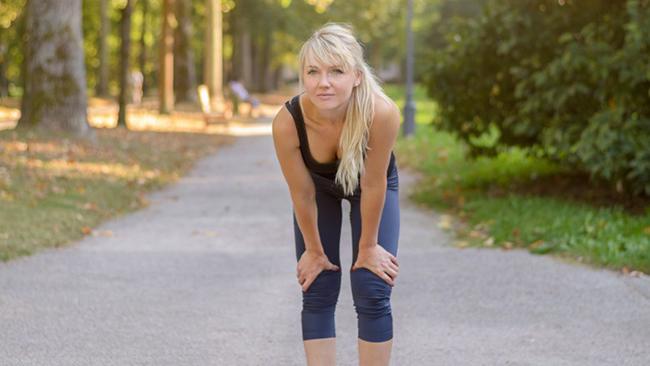
In general, the goal should be to take oxygen and release carbon dioxide as efficiently as possible. Naturally, you can't get air through your nose as much as you would with your mouth.
Therefore, breathing through your mouth while running will be more effective. While it is true that the air is filtered and warmed when you breathe through your nose, do not let your body become deprived of oxygen while working and running.
As your running intensity increases, you'll soon find that you can't get enough oxygen by breathing through your nose.
How to breathe when running
Diaphragm breathing (sometimes called abdominal breathing) can help strengthen your breathing and encourage adequate oxygen exchange. When you run, this makes breathing more efficient and allows your body to use oxygen more efficiently.
Besides, abdominal breathing allows you to inhale more air, which can help prevent hip shock. You can practice abdominal breathing while your body is at rest with the following 3 steps:
- Pay attention to your upper body. Your posture should be straight, with relaxed shoulders not hunched or forward. Your head should be straight with your body, not forward. You will not be able to breathe deeply if you are cuffed.
- Inhale through your nose. Push your belly out, and at the same time, lower the diaphragm. Instead of widening your upper chest, you will feel your belly bulge. This allows you to take in more air with each breath.
- Exhale slowly and evenly through your mouth.
When you first learn abdominal breathing, try to practice several times a day for about five minutes each session. Once you become more comfortable with diaphragmatic breathing, it will be easier to incorporate effective breathing practices during your run.
Video instructions for abdominal breathing

Breathing rate when running
- If you run at low intensity – 3: 2 (3 inhalations, 2 exhalations)
- If you run at a moderate intensity – 2: 1 (2 inhalations, 1 exhalation)
- If you run at high intensity – 2: 1: 1: 1 (2 in, 1 out, 1, in, 1 out)
These ratios should be used only as a reference rule and should not apply to every runner. The best way is to try a few different breaths and find the most comfortable feeling for you.
Regardless of your breathing rate and running intensity, the most important thing is to focus on breathing deeply and through your abdomen so that you can increase the time and amount of oxygen you inhale and exhale.
Duration, heart rate, and average running speed
“ How much running time is enough? ”Is also a common question among runners. Most experts recommend running 3 to 4 days a week.
If you are used to running and know how to speed yourself up, you can increase it to 5 days a week. Always give your body at least 1 day of rest per week.
If you don't allow your body to rest, you risk injury, exhaustion, and poor running because your muscles are too tired. You may feel overwhelmed by the idea of 3 to 4 days of running.
As a beginner, you can combine running and walking with a total time of 20-30 minutes in 3-4 days/week.
For your running heart rate, you can determine your target heart rate for running using your maximum heart rate. When running, you should exercise at 50 to 85 percent of your maximum heart rate.
To calculate maximum heart rate, subtract 220 from your age. If your heart rate drops below this level, you may want to choose a higher rate for better results. If your heart rate is above the maximum, you may want to slow it down. A heart rate monitor can make it easier to track your maximum heart rate.
The appropriate or ideal speed depends on each person and their current fitness level for average running speed. So for a beginner, what is the average running speed?
The best speed is about 13.3 km / h (about 4:30 minutes per km) for men and 10.5 km / h (5:42 minutes per km) for women.
The scientific way to run is to start running slowly to find your pace, gradually increasing it until you reach the heart rate you want. Practitioners need to master their own pace and run with fellow runners instead of running after the first group.
With good control, you can run a 400m circuit without getting tired.
Every time you run and feel short of breath, please slow down so your body can regulate it, run at a slow pace, and increase; you should not run too fast. The amount of exercise should gradually increase.
III. How to stay motivated
Have a plan: Schedule your runs. Put it on the calendar. Be consistent about it. If the only time you have yourself is during your lunch break, schedule your running afterward.

If the time before work or school is best, take it for you. Set the alarm if needed. That said, listen to your body: If you don't feel like a day of running, it should be fine. It could be a sign that you and your body need rest.
Get dressed: Sometimes, the hardest part is getting the motivation to get out of the front door. In order not to feel guilty about not accomplishing your goals, make a change!
Prepare your running gear, tools, and accessories such as headphones, music tracks for more motivation and put it in the position where it is easiest to see.
Know your goal: Be intentional about why you run, whether that goal is to stay healthy because you have high blood pressure or because you signed up to run 10,000 for three months. Remind yourself that your efforts today will add to something bigger in the long run.
Finding companions: Running alone is lonely; running alone is more motivating. Find one or a few responsible and disciplined friends and remind us when we feel difficult. Having a companion will make you more excited and motivated to teach early to put on your shoes and follow the call of responsibility.
Join a running club: Get motivated by other athletes. Join a local running club and join their online forums.
Sign up for a race: Once you run regularly, you might start thinking about taking a race track. They are often referred to as “FUN RUN” because most athletes do not take the competition seriously.
Regardless of your competitive level, consider training for a race even if your goal is simply over. Regardless of the distance of 5Km, 10Km, 21km, or a full marathon, set specific training goals for the few months before your race.
Record your progress: Running apps or other online fitness trackers makes it easy for you to track your progress and help you feel good about your achievements. Record your mileage runs and time.
IV Endurance exercise
Once you've mastered the basics of running skills, start getting your body used to running for longer periods of time. The highlight in this basic training phase is distance building, not speed.
Running too fast, too early can exhaust you physically and mentally and make you more vulnerable to injury.
Gradually increase slowly: Some athletes recommend increasing your running miles, distance, and intensity by no more than 10 percent per week to avoid injury. If you're new to exercising and running, you may want to start with a 5 percent weekly increase.
| Number of Km per week | 5% increase | 10% increase |
|---|---|---|
| ten | 0.5 km | 1 kilometer |
| 20 | 1 kilometer | 2 km |
Cross-Training: Do an activity other than running to give your legs and muscles a break. Cycling, swimming, aerobic dancing, or additional exercises can help prevent exhaustion.
Cross Training is a term that only performs several different exercises to support the main form of training and is related to training; it is essential for professional athletes. As well as amateurs. It helps you to maintain high fitness during long-term exercise.
Strength training: Combine strength training to improve your overall efficiency and performance.
There are many ways to increase strength beyond lifting weights or using the weight machine at the gym. There are simple exercises you can do at home to strengthen the muscles you use most while running. For an exercise you can do at home, read more in Running Training Exercises.
Rest and recovery: When you run further away, your body needs time to recover with days of rest. Once you've passed the walk/running phase, then start running a short day / long run. For example, if you run 5 km a day, you can just run 2 km the next day.
V. Frequently asked questions about proper running
Should skinny people go running?
Running is a heart-healthy form of exercise that can help improve your heart health and have many health benefits while also losing fat quickly. However, should thin people go running?

If you're just trying to maintain general fitness, then running is generally fine. However, if you are trying to gain muscle or weight, daily running may not be as good as bodybuilding.
Most people think that running can make your body look better, as it can help overweight people lose fat percentage for a healthy body.
However, running too much may not be good for thin people. In short, for lean people and those who want to gain weight, you can still run, provided it does not affect your daily calorie needed for effective weight gain.
Does running Lose Weight running Can Reduce Belly Fat?
Running is a popular weight loss exercise with a significant caloric intake. It is classified as a cardio exercise that stimulates the heart rate and breathing, enhances metabolism, helps burn fat significantly.
Therefore, it can be concluded that if you exercise properly, running will YES help you lose fat, but was much, where less, depends on each person's condition.
Some lose in the belly; some lose in thighs, some lose in other places. But once you have reduced the overall amount of fat on your body, round 2 will definitely slim down slightly.
Does running help increase height?
Running is an intense and high-impact exercise with many benefits. It can improve the heart and lungs' effectiveness, maintain normal blood pressure, increase bone density, increase flexibility, and even prevent different types of cancer. But running tall no longer depends on your daily activities.

Technically, running won't directly make you taller, but it will contribute to several factors that increase your height. Running helps to overcome standing, making people look taller.
Also, it helps activate hormones that lead to natural body growth. So if the growth hormones work with your genes' height, you'll look taller than before.
Also, to increase height, you need to control your nutrition, including complex carbs (rich in vitamins and minerals), protein; have a suitable sleep cycle – minimum 7 to 8 hours; stay away from alcohol, drugs, stress, smoking, and sedentary lifestyles.
Should the gym run?
Running is considered a form of cardiovascular exercise, helping the body to exchange oxygen better. So you can completely combine running with the gym to train your cardio better, making the gym process more effective.
Should you jog before or after the gym?

If you want to build your stamina and breathability, run after a workout. If you want to build muscle, run ahead.
If you have time to split up into 2 workouts a day or can add extra hours per week to make room for strength workouts and separate running sessions, then you have no problem!
But, if you only have one hour and absolutely have to do cardio and weights in the same hour, your best bet is 40 minutes of gym first and 20 minutes of running after that.
Does running enlarge my legs?
Running can make your legs bigger and thinner depending on the form of your run.
Why running makes your thighs bigger:
- New to running
- You run with too much intensity
- You run several sessions a week
Why running makes your thighs slimmer:
- Long-run
- running reduces fat weight
Which one is better for walking and running?
If you have a short time and only around 10 minutes, your best way might be to sprint. If you have more time to exercise, you should consider walking and running. It's easier on the body and can burn more calories over a longer period of time.
Back to the main question – is walking or running better? Running will burn more calories in a short amount of time, but you can't sustain it for long. While walking burns fewer calories, you can stay at this pace for the long term. It is also much easier on the body and helps you relax more.
In short, you should combine the two for the best results. This way, you'll get the most out of both ways, including post-burn efficacy, and it will be easier on your overall health.
When should I run?
Many studies suggest that a late afternoon (4 p.m. onwards) is the best time to run or do any type of sport. This is because useful factors like body temperature, hormone levels, respiration, and reflexes peak in the late afternoon.
Also, while late afternoons are best for long-distance runs, early evenings are best for sprints.
If you are an athlete or intend to run longer, the late afternoon and early evening are the best times to train as you are in your best shape at those times of the day.
While running in the morning is the best time to run if you want to relax your body, stress, or speed up weight loss.
Improve Your Running Technique Instantly: running & Sprinting

In short, when you decide to run, you should know that every part of your body plays an important role and that if one of them is not in the right position, this part can adversely affect the part of your body.
Starting from your vision to the shoes you wear, you should pay attention to detail so you can get a proper morning jog. And the most important part is enjoying what you are doing!
Read more:
- Top Warm Up Exercises Before Workout Bodybuilding Increase Exercise Performance
- Top 16 Ways to Lose Weight For a Lazy Person
- Trail Runner Gear – Help You Stay Safe And Complete The Journey
Hopefully, the information above has helped you gain some more knowledge about “how to improve running form” and bring some small value. Please share this article if you feel it is useful. Thanks!
Comprehensive sources: Rei, Travel gear



